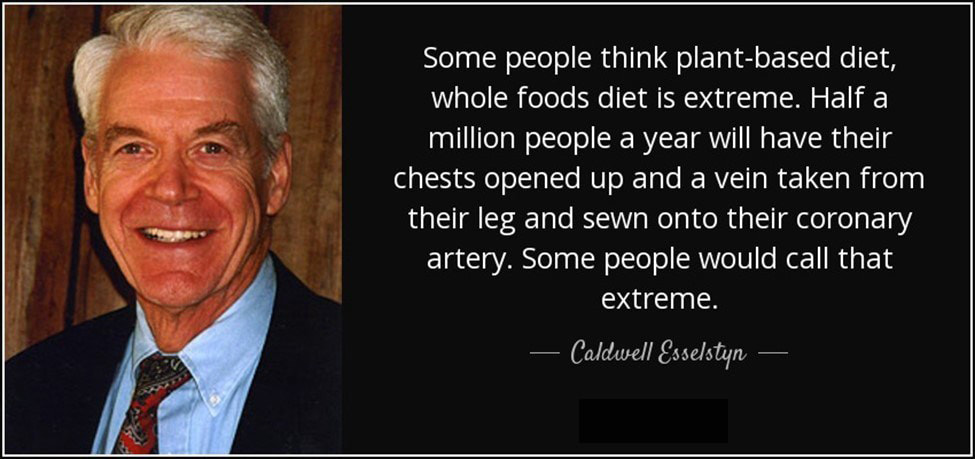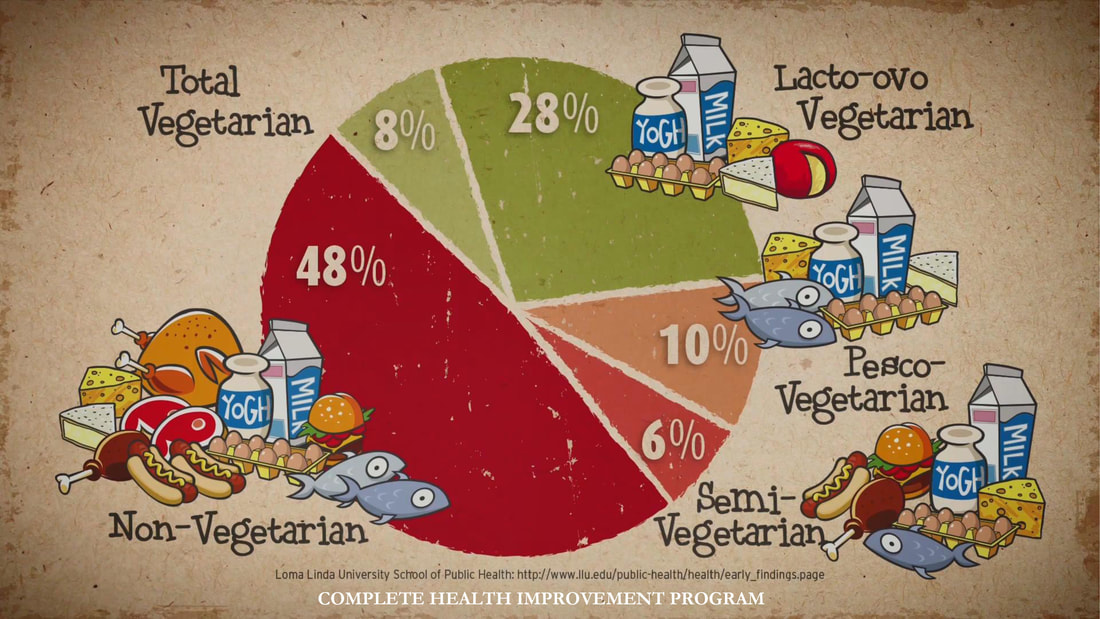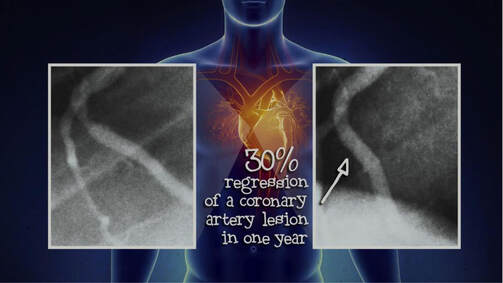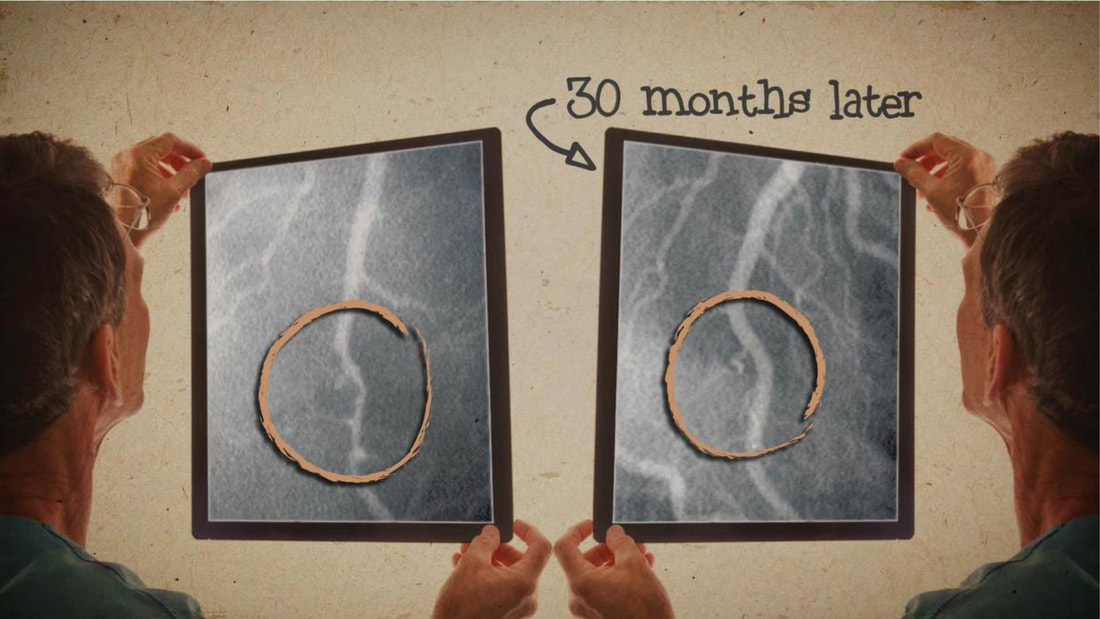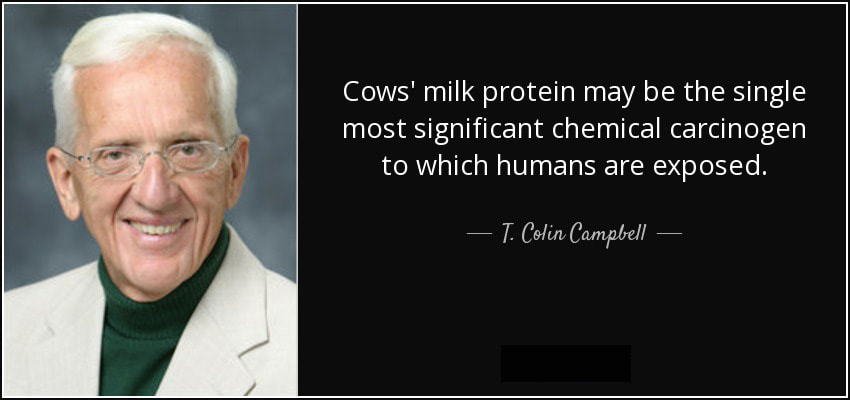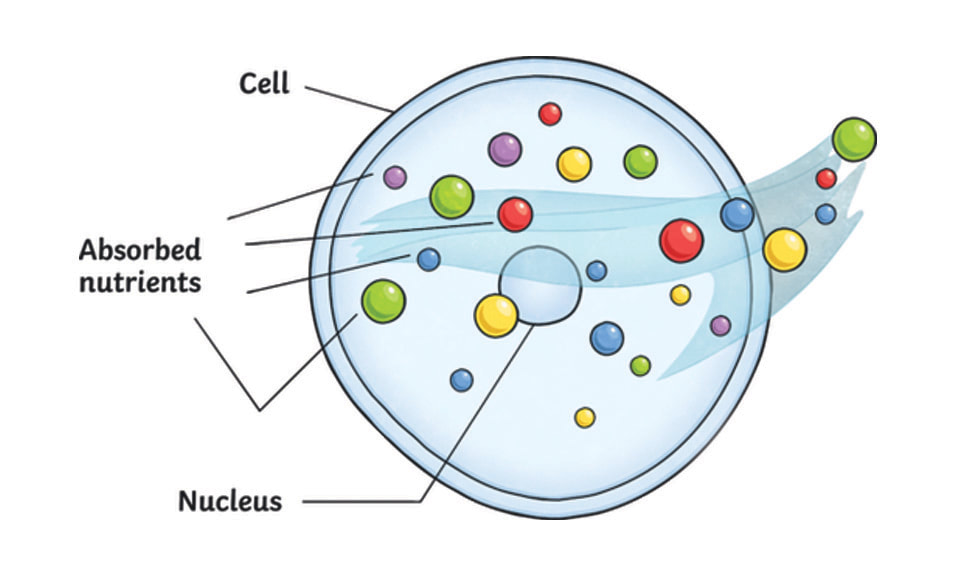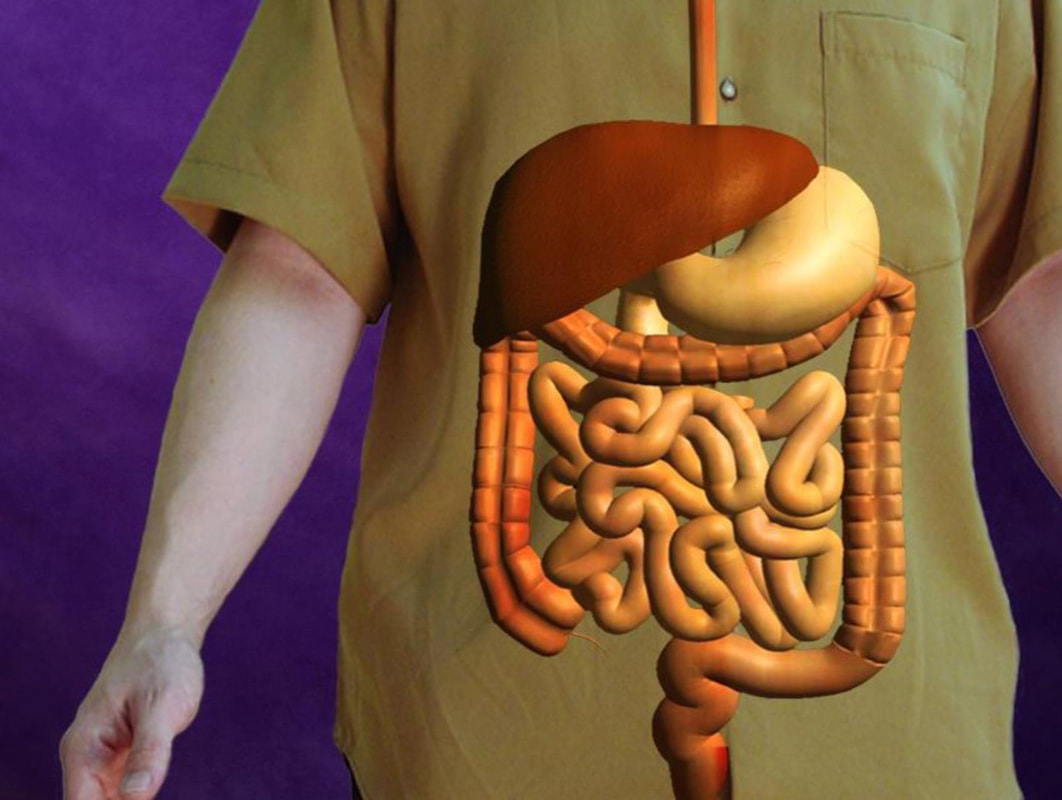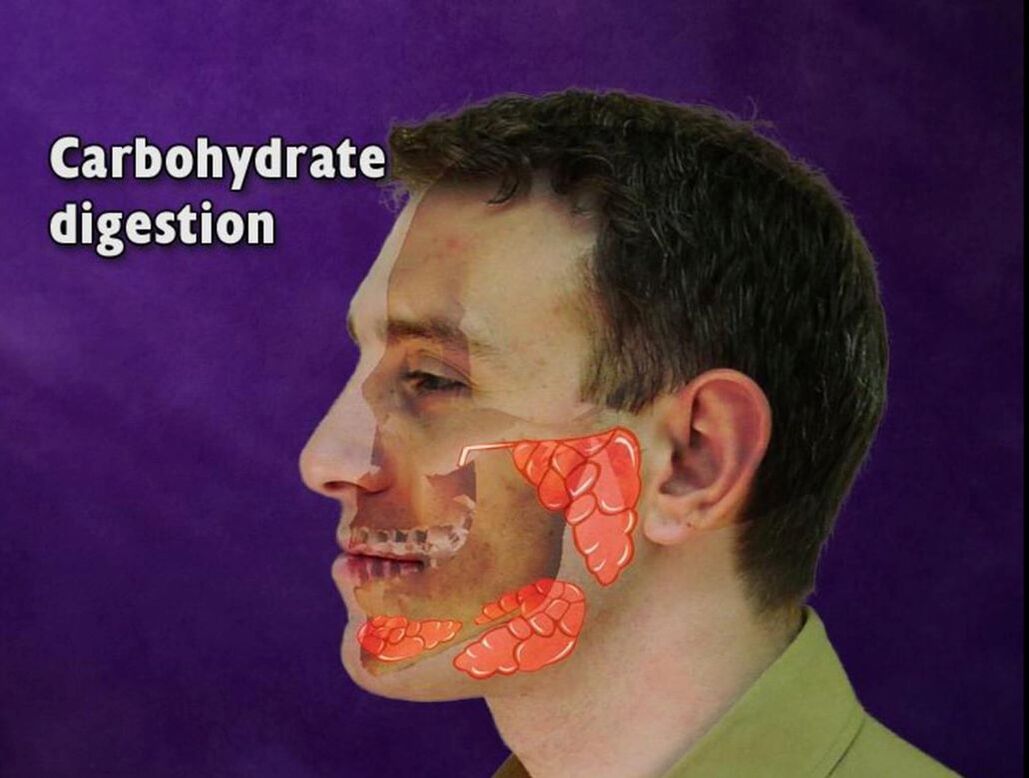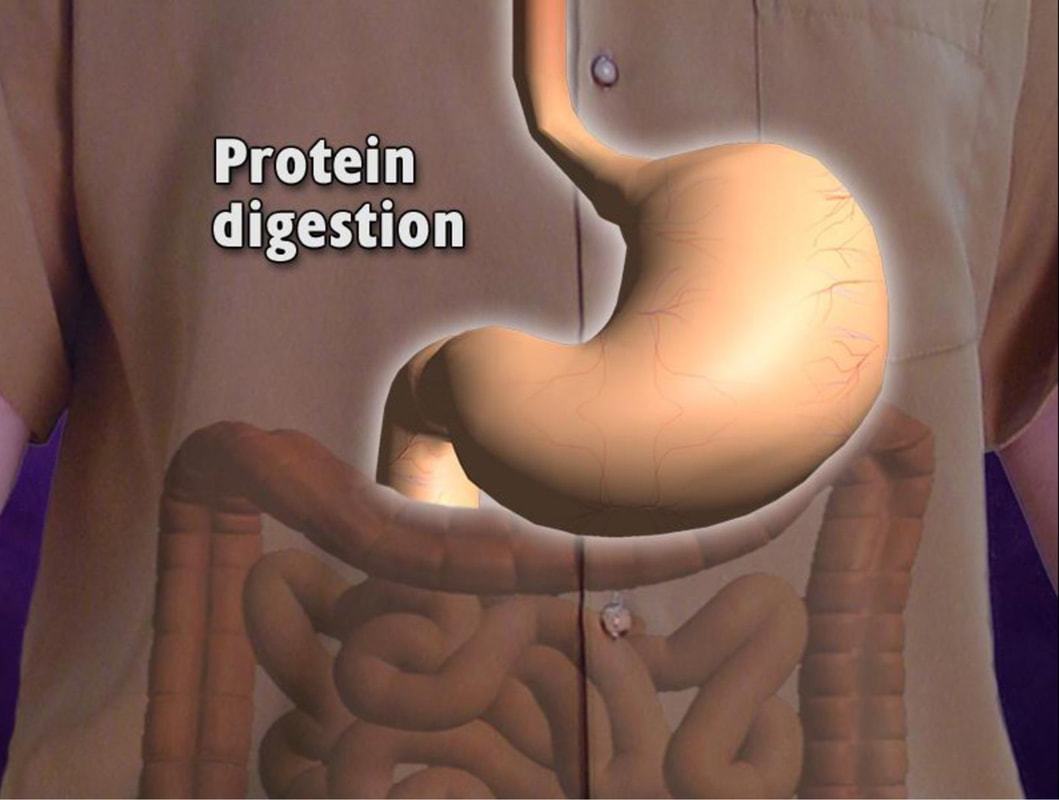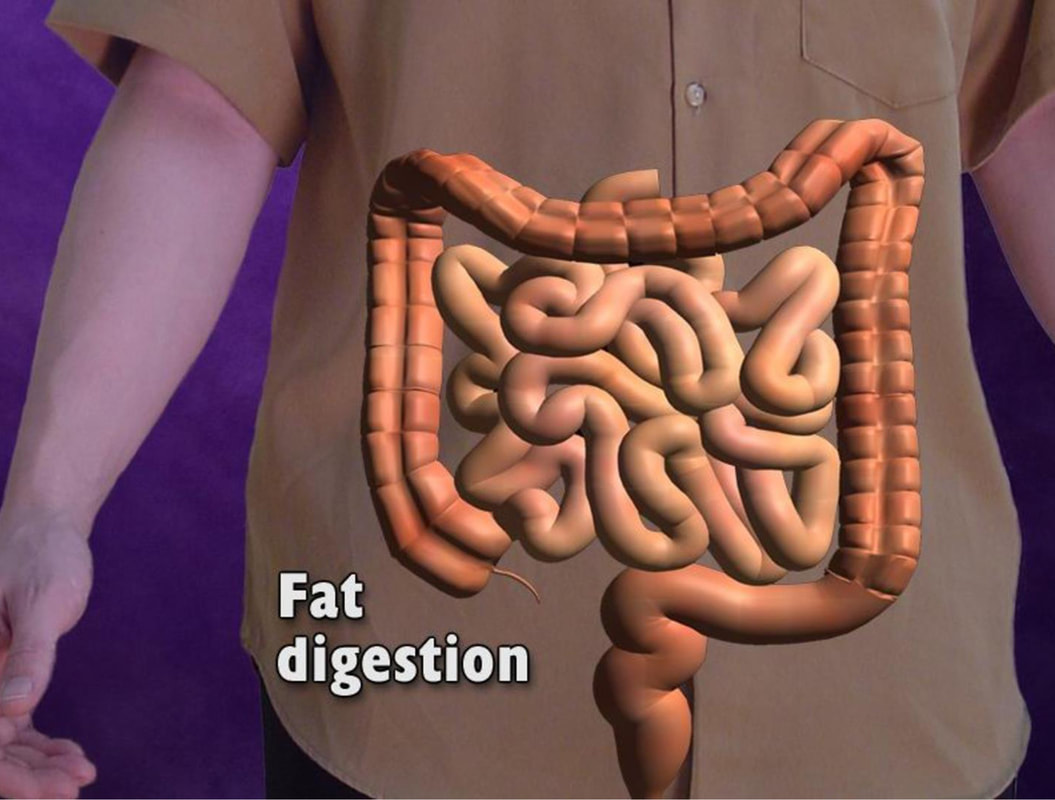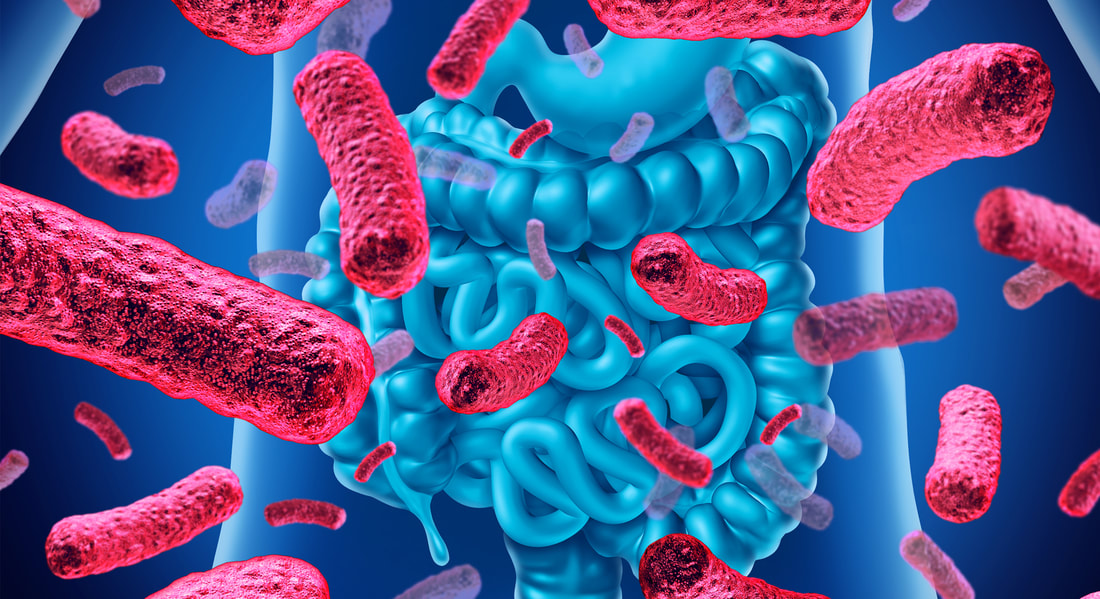Welcome!
Culinary Medicine is simply the art of cooking for health. As defined by the American College of Preventive Medicine, it is the practice of helping patients use nutrition and good cooking habits to restore and maintain health. It's a new field that combines important scientific principles related to nutrition, behavior, and Medicine. Culinary Medicine offers a simple approach to understanding how food and cooking relates to personal health, habits, and healthcare goals. It is an important self-care tool studied by medical professionals and implemented at the practitioner level to better counsel patients and improves health outcomes.
This field recently emerged with the advent of Wellness and Healthy Lifestyle Programs due to the continuous out surge of non-communicable diseases worldwide. The World Health Organization has predicted that morbidity will be two-thirds caused by faulty lifestyle choices by 2020. And as of today, evidence shows that about seventy percent of deaths worldwide are already lifestyle-related diseases, including heart disease, stroke, diabetes, and cancer. With the advances in Medicine, the availability of prescribed drugs, and the increasing number of highly qualified medical diplomats, the non-communicable disease incidence has tremendously gone up, and morbid individuals are left with no choice but to maintain drugs to control their condition retard the eminent complications and somehow live longer. So far, no medical treatment seems to offer a cure and reversal of such diseases.
It's not surprising to see patients in a ditch, confused about their health condition, taking one pill to another. Yet, their blood sugar keeps creeping up, their cholesterol is still above target, their blood pressure is uncontrolled, and their weight is frustratingly high. Some may go for an expensive and carefully planned diet program and experience amazing change as an initial effect, but the same problem goes back after the diet. It seems to be a vicious cycle, and "Yoyo" effect is always manifested basically due to the common failure of not addressing the cause of the problem.
More and more evidence is prominently showing the link of FOOD as a powerful factor in the prevention and treatment of chronic diseases and a great undeniable factor in the development of several non-communicable diseases. "Food as Medicine" now makes a lot of sense after all. It was not too long ago, during the good old days when people ate farm products with a complex combination of plant-based and animal products, but the incidence of cancer, diabetes, heart disease, and obesity, to name a few, were too low until the 20th century when the incidence and prevalence rate has gone up enormously. What seems to go wrong? People are eating the same complex combination of food, including fruits, vegetables, and animal products. But why was the increase exceedingly high, and it keeps slinking up right before our eyes? What could be the difference between the food source, preparation, portion consumption, and preferences that may explain the inevitable development of chronic diseases? There might be a lot of confusion on the consumers' side due to so much information and claims the food industry presents to the public.
This course is an excellent jumpstart to achieving healthy eating behavior. We will primarily deal with several factors influencing the food sources, choices, preparation, nutrition prescription, and related pathogenesis to cause the manifestation of chronic diseases, subjects not commonly heard from public health campaigns or doctor's advice. A comprehensive list of simple and easily prepared recipes is included in the training to serve as a reference for each stage of change you may take to achieve optimal dietary practices. The bottom line is that most people wanted to live longer than the expected life span, which is surprisingly so low as the national statistical data shows us. But since the culture and practices around us are neither encouraging nor leading people to live long, we've got to do something! It's never too late to educate ourselves and start taking baby steps that will benefit not only us but our family and the next generations to come, where we pass our genes, familial practices, and disease risks at large.
MECHELLE ACERO PALMA, MD
Founder, CulinaryMD
Culinary Medicine is simply the art of cooking for health. As defined by the American College of Preventive Medicine, it is the practice of helping patients use nutrition and good cooking habits to restore and maintain health. It's a new field that combines important scientific principles related to nutrition, behavior, and Medicine. Culinary Medicine offers a simple approach to understanding how food and cooking relates to personal health, habits, and healthcare goals. It is an important self-care tool studied by medical professionals and implemented at the practitioner level to better counsel patients and improves health outcomes.
This field recently emerged with the advent of Wellness and Healthy Lifestyle Programs due to the continuous out surge of non-communicable diseases worldwide. The World Health Organization has predicted that morbidity will be two-thirds caused by faulty lifestyle choices by 2020. And as of today, evidence shows that about seventy percent of deaths worldwide are already lifestyle-related diseases, including heart disease, stroke, diabetes, and cancer. With the advances in Medicine, the availability of prescribed drugs, and the increasing number of highly qualified medical diplomats, the non-communicable disease incidence has tremendously gone up, and morbid individuals are left with no choice but to maintain drugs to control their condition retard the eminent complications and somehow live longer. So far, no medical treatment seems to offer a cure and reversal of such diseases.
It's not surprising to see patients in a ditch, confused about their health condition, taking one pill to another. Yet, their blood sugar keeps creeping up, their cholesterol is still above target, their blood pressure is uncontrolled, and their weight is frustratingly high. Some may go for an expensive and carefully planned diet program and experience amazing change as an initial effect, but the same problem goes back after the diet. It seems to be a vicious cycle, and "Yoyo" effect is always manifested basically due to the common failure of not addressing the cause of the problem.
More and more evidence is prominently showing the link of FOOD as a powerful factor in the prevention and treatment of chronic diseases and a great undeniable factor in the development of several non-communicable diseases. "Food as Medicine" now makes a lot of sense after all. It was not too long ago, during the good old days when people ate farm products with a complex combination of plant-based and animal products, but the incidence of cancer, diabetes, heart disease, and obesity, to name a few, were too low until the 20th century when the incidence and prevalence rate has gone up enormously. What seems to go wrong? People are eating the same complex combination of food, including fruits, vegetables, and animal products. But why was the increase exceedingly high, and it keeps slinking up right before our eyes? What could be the difference between the food source, preparation, portion consumption, and preferences that may explain the inevitable development of chronic diseases? There might be a lot of confusion on the consumers' side due to so much information and claims the food industry presents to the public.
This course is an excellent jumpstart to achieving healthy eating behavior. We will primarily deal with several factors influencing the food sources, choices, preparation, nutrition prescription, and related pathogenesis to cause the manifestation of chronic diseases, subjects not commonly heard from public health campaigns or doctor's advice. A comprehensive list of simple and easily prepared recipes is included in the training to serve as a reference for each stage of change you may take to achieve optimal dietary practices. The bottom line is that most people wanted to live longer than the expected life span, which is surprisingly so low as the national statistical data shows us. But since the culture and practices around us are neither encouraging nor leading people to live long, we've got to do something! It's never too late to educate ourselves and start taking baby steps that will benefit not only us but our family and the next generations to come, where we pass our genes, familial practices, and disease risks at large.
MECHELLE ACERO PALMA, MD
Founder, CulinaryMD
The Science of Culinary Nutrition
NUTRITIONAL SCIENCE
It is essential for readers to be aware of the credibility of the information we deal with. Articles coming out in social media and a multitude of publications may be unreliable. It’s also necessary to understand that research studies in many forms are not exempted from influences from many unnamed factors. Below are the common types of studies used in establishing nutritional science.
It is essential for readers to be aware of the credibility of the information we deal with. Articles coming out in social media and a multitude of publications may be unreliable. It’s also necessary to understand that research studies in many forms are not exempted from influences from many unnamed factors. Below are the common types of studies used in establishing nutritional science.
|
Nutrition prescription is one of the Core Lifestyle Medicine Competencies. Dr. Dennis Burkitt emphasized the major dietary changes that followed the industrial revolution causing a significant increase in chronic disease incidence and prevalence whenever there is a reduction in starch foods and fiber intake and a substantial increase in consumption of animal fats, salt, and sugar.
|
One study published in the International Journal of Epidemiology revealed a strong correlation between serum cholesterol, diet, and coronary heart disease. People in this specific part of the world are not in any way exposed to a Western diet, and surprisingly, heart disease, the number one killer among Americans, is almost non-existent in the African population of Uganda. The staple foods, green plantain, and sweet potatoes, are steamed in banana leaves: cassava, yams, and millet are also the staple commodities in particular of the non-Baganda groups, while all take pumpkins, tomatoes, and green leafy vegetables. The protein adequacy in the diet depends almost entirely on the extent to which pulses, ground nuts, and cereals are used.
|
Dr. Caldwell Esselstyn also noted that coronary artery disease is virtually absent in cultures that eat plant-based diets, such as the Tarahumara Indians of northern Mexico, Papua highlanders of New Guinea, and the inhabitants of rural China and central Africa. Hundreds of thousands of rural Chinese have lived without a documented myocardial infarction for years.
|
The editor-in-chief of the American Journal of Cardiology, Dr. William Roberts, was convinced that the disease has a single cause, namely cholesterol and that the other so-called atherosclerotic risk factors are only contributory at most. In other words, if the total serum cholesterol is 90 to 140mg/dL, there is no evidence that cigarette smoking, systemic hypertension, diabetes mellitus, inactivity, or obesity produces atherosclerotic plaques. Hypercholesterolemia is the only direct atherosclerotic risk factor; the others are indirect. Dr. Roberts also implied that the goal for all populations – not just those with heart attacks or strokes, diabetes mellitus, or non-coronary atherosclerotic events – must be LDL cholesterol <100 mg/dL and ideally <70mg/dL. If the goal was created, the great scourge of the Western world would be eliminated. In fact, it was published in the Journal of Lipid Research that the average blood cholesterol level in the United States (and other countries using Western medicine guidelines), the so-called normal level (up to 200mg/dL), was actually abnormal. It accelerated atherogenesis and put a large fraction of the so-called normal population at a higher risk for coronary heart disease.
It was also found that almost 75% of heart attack patients fell within recommended targets for LDL cholesterol, demonstrating that the current guidelines may not be low enough to cut heart attack risk. Accumulating data from multiple lines of evidence consistently show that the physiologically normal LDL level and the thresholds for atherosclerosis development and coronary heart disease events are approximately 50 to 70 mg/dL.
The well-known Longitudinal Study of Aging Danish Twins, research on genetics and longevity suggested that genetics account only for 20% to 30% of life span, with the rest due to environmental and lifestyle factors. With these findings, Dan Buettner, a journalist, set out a remarkable work of finding the longest-lived people on earth and called them the “Blue Zone.” They are distributed across the globe with diverse histories, genetics, cultures, traditions, and environments. But they have many things in common, which include eating a whole foods diet with an average of 90% calories coming from plant-based sources and an active lifestyle. In 2004, Dan Buettner teamed up with National Geographic, and the world’s best longevity researchers began their exploration and identified 5 Blue Zones.
|
The first Blue Zone identified by Buettner was Sardinia, Italy. There have always been centenarians in Sardinia, but in the most mountainous inland region called Barbagia, with nearly 58,000 population, a cluster of villages on the island is linked to exceptional longevity. This is due to geographic isolation and the undiluted genes of the residents. But even more importantly, Sardinians of this area are culturally isolated and very traditional.
|
They have kept their healthy lifestyle throughout generations; they still hunt, fish, and harvest the food they eat. Sardians are farmers and shepherds, and they live in a clean environment. They remain close to friends and family throughout their lives.
|
Ikaria, Greece, is another Blue Zone, a relatively remote island with only a little more than eight thousand inhabitants. It’s the Aegean Island that is found to be one of the world’s lowest rates of middle-age mortality and the lowest rates of dementia. Ikarians exercised mindlessly. They eat a variation of the Mediterranean diet, with lots of fruits and vegetables, whole grains, beans, potatoes, and olive oil.
|
They enjoy drinking antioxidant-rich herbal teas coming from wild rosemary, sage, and oregano that also act as a diuretic that maintains blood pressure. People in Ikaria don’t mind time and live a relaxed lifestyle.
|
Okinawa, Japan, is another Blue Zone with a unique outlook on life. They’re capable of letting difficult early years remain in the past while they enjoy today’s simple pleasures. Okinawans have one of the highest ratios of centenarians, about 6.5 in 10,000 live to 100 lower rates of disease than Americans in every given category.
|
Their staple food is composed of vegetables and sweet potatoes (67%) with high nutrients and low calories. The Okinawan diet is rich in foods made with soy, like tofu and miso soup. They also have medicinal herbs, including ginger and turmeric, in their regular food consumption.
|
Another Blue Zone is Costa Rica’s hilly Nicoya region, the mestizos (people combined European and American Indian descent) reach the age of ninety at two and one-half times the rate of northern Americans and have much less cancer, heart disease, and diabetes.6 The Caribbean nation is economically secure and has excellent health care, and Nicoyans have also stayed relatively free of the diseases of affluence that afflict Costa Rica’s city-dwelling populations.
|
Nicoyan centenarians frequently visit with neighbors, and they tend to live with families and children or grandchildren who provide support as well as a sense of purpose. One unique tradition of Nicoyans are eating light dinner early in the evening. For most of their lives, Nicoyan centenarians ate their staple diet composed of squash, corn, and beans.
And the last Blue Zone we will discuss is a unique religious group that is called the healthiest people in the world, the Seventh Day Adventists in Loma Linda, California. Unlike the four identified Blue zones, this religious group is not in an isolated place in the United States. Loma Linda is in Southwestern San Bernardino County.
|
HEALTHIEST PEOPLE IN THE WORLD
In the 1970s and ‘80s, the first Adventist study was conducted in Loma Linda, California, with more than thirty-four thousand people who were followed for fourteen long years. It is uncommon in epidemiological studies that researchers can survey a group of people with very similar lifestyles and practices. |
And most importantly, many distinct dietary subgroups enable them to more effectively isolate the impact of diet on health. The Seventh-day Adventist is a religious group established in the mid-nineteenth century.
The counsels of Seventh-day Adventists are largely inspired by the biblical verse Genesis 1:29: “And God said, Behold, I have given you every herb bearing seed, which is upon the face of all the earth, and every tree, in which is the fruit of a tree yielding seed; to you, it shall be for meat.” In other words, eat real food, eat plants. They also have comprehensive guides and counsels written in many books emphasizing healthy lifestyles as part of their doctrine and beliefs.
The counsels of Seventh-day Adventists are largely inspired by the biblical verse Genesis 1:29: “And God said, Behold, I have given you every herb bearing seed, which is upon the face of all the earth, and every tree, in which is the fruit of a tree yielding seed; to you, it shall be for meat.” In other words, eat real food, eat plants. They also have comprehensive guides and counsels written in many books emphasizing healthy lifestyles as part of their doctrine and beliefs.
|
The Seventh-day Adventist church viewed health as central to their faith, and that made them one of the most interesting groups to study from the perspective of diet. They have such a similar overall lifestyle. Active members of the church are not smokers or alcohol consumers, they have a strong religious faith and community, and they exercise regularly.
|
The Adventists’ staple diet was largely composed of fruits and vegetables, nuts, legumes, and soy foods. Although other Seventh-day Adventists are consuming animal products, they still avoid certain types of foods they consider unclean based on a Biblical and health perspective. Specific members also follow different vegetarian patterns, including vegan (no animal products), lacto-ovo vegetarian (vegetarian with dairy and eggs), to pesco-vegetarian (vegetarian with fish).
In 2002 a second major Adventist study was started, led by Dr. Gary Fraser and a team of researchers from Loma Linda University, which included ninety-six thousand participants from across the United States and Canada. The results from that study showed that Adventist meat-eaters had the biggest waistlines and had a higher death rate than their vegetarian Adventist counterparts. They also tended to have worse overall dietary habits, including greater consumption of highly processed foods such as sugar, soda, and refined grains. This raises the question of whether it was animal foods or the, processed food, or both that led to shorter lives in this cohort. Although we cannot tease that out with this study, what we can tell is that the lacto-ovo vegetarians, the pesco-vegetarians, and the vegans all had significantly lower mortality rates compared to the meat-eaters.
It’s worth noting that even those Adventists classified as meat-eaters were much less so than most Americans. The meat-eating Adventists’ diet (in terms of daily intake in grams) was largely composed of fruits and vegetables, nuts, legumes, and soy foods. And the overall better life expectancy of the community reflects that fact.
The Adventists are one of the most interesting groups to study from the perspective of diet because they have such a similar overall lifestyle. It is rare in epidemiological studies that researchers can observe a group of people with very similar lifestyles but so many distinct dietary subgroups, enabling them to more effectively isolate the impact of diet on health.
The Adventists are one of the most interesting groups to study from the perspective of diet because they have such a similar overall lifestyle. It is rare in epidemiological studies that researchers can observe a group of people with very similar lifestyles but so many distinct dietary subgroups, enabling them to more effectively isolate the impact of diet on health.
When it comes to America’s leading cause of death – heart disease and cancer – the vegetarian Adventist again fare well. They have the lowest rate of heart disease in the nation. In men, the risk of fatal heart disease was “significantly related to beef intake.” The risk of colon cancer was increased by 88% in Adventists who ate meat over their vegetarian counterparts. Diabetes, our rapidly growing national epidemic, is rare among the Adventists. Indeed, they boast the nation’s lowest rates of the disease. Switching to plant-based nutrition involves a radical remaking of what’s on the plate and in the pantry. It means changing a lifetime of habits, learning new skills, and developing new tastes. Some people do best with a slow, step-by-step transition, while others choose to go all in, all at once.
CLINICAL PIONEERS OF PLANT-BASED NUTRITION
In the late 1950s, a young man named Nathan Pritikin was diagnosed with heart disease at just forty-two years of age. Through a long experiment with diet, he eventually reversed his disease. In 1975, he opened up a “longevity center” in California to share his regimen, which was essentially whole foods, primarily plant-based diet, along with exercise every day. Pritikin’s patients got better – a lot better! Risk factors for heart disease improved across the board, cholesterol went down, and arterial function and blood flow improved, along with a host of other health transformations. Pritikin’s works attracted a great deal of attention in his day, but without medical credentials or controlled trials, he was never fully accepted by the establishment. Since his death, more than 100 studies in peer-reviewed journals have validated the program’s effectiveness. Meanwhile, however, the task of scientifically demonstrating that diet and lifestyle change could reverse heart disease was being taken up by an independent-minded young physician from the Lone Star State.
In the late 1950s, a young man named Nathan Pritikin was diagnosed with heart disease at just forty-two years of age. Through a long experiment with diet, he eventually reversed his disease. In 1975, he opened up a “longevity center” in California to share his regimen, which was essentially whole foods, primarily plant-based diet, along with exercise every day. Pritikin’s patients got better – a lot better! Risk factors for heart disease improved across the board, cholesterol went down, and arterial function and blood flow improved, along with a host of other health transformations. Pritikin’s works attracted a great deal of attention in his day, but without medical credentials or controlled trials, he was never fully accepted by the establishment. Since his death, more than 100 studies in peer-reviewed journals have validated the program’s effectiveness. Meanwhile, however, the task of scientifically demonstrating that diet and lifestyle change could reverse heart disease was being taken up by an independent-minded young physician from the Lone Star State.
After only twenty-four months, the patients who made comprehensive lifestyle changes showed improvement (reversal) in their heart disease, whereas those in the randomized control group got worse. This, the first randomized controlled trial showing that lifestyle changes alone could reverse heart disease, was published in the Journal of the American Medical Association. In 1984, he launched the Lifestyle Heart Trial.
|
In Cleveland, Dr. Caldwell Esselstyn was also developing a study. He had encountered some resistance from the establishment. Most senior cardiologists at the Cleveland Clinic, he writes, “did not believe there was a connection between diet and coronary disease. Nevertheless, in 1985, the Department of Cardiology agreed to participate in his first proposed study.
|
The department would refer patients to him – primarily those for whom bypass surgery or angioplasty had failed and several who had been told there was nothing more that could be done for them. Esselstyn’s hypothesis was that plant-based nutrition could reduce their cholesterol levels below 150 mg/dL (closer to the level seen in those traditional cultures that had no heart disease) and, in so doing, slow or halt the disease process. By 1988 a cohort of twenty-four people with severe, progressive coronary artery disease was eating a very low-fat, plant-based diet under his supervision.
From a dietary standpoint, Ornish’s and Esselstyn’s studies were very similar. However, unlike Esselstyn, who instructed patients to continue their medications, Ornish did not use cholesterol-lowering medications in his study. Moreover, he stipulated other lifestyle changes in addition to the nutritional component, including relaxation techniques, moderate exercise, smoking cessation, and participation in a support group – interventions he believes are also critical to the success of the program. His study included forty-eight patients who were randomized into two groups: twenty-eight of the patients made the recommended diet and lifestyle changes, while the other twenty served as a control group, following standard medical treatment and dietary advice from the American Heart Association.
Ornish’s work was the first to be made public. In 1990 he published the one-year results. Most of the experimental group reported a complete or nearly complete disappearance of chest pains. But patients not only felt better, but they were also better. When measurements were taken of their narrowed arteries using angiograms, 82% showed an increased diameter (reversal). Only one patient who had poor adherence showed significant progression (worsening).
In 2006, Esselstyn launched a second, larger study, this time following 198 patients who adopted his plant-based nutritional program. In 2014 he published the results: of those who complied with the diet, 93% experienced improvement in angina symptoms. And only one patient experienced a major cardiovascular event due to recurrent disease (a stroke) – demonstrating that his diet was protective for 99.4% of patients who followed it. In comparison, among the twenty-one participants who did not adhere to the program, thirteen experienced further cardiac events, including two deaths.
Ornish’s and Esselstyn’s studies represent a dramatic medical breakthrough. Until that point, the best that drugs and surgical treatments could do was manage heart disease. They ended up doing something few even believed was possible: they showed that heart disease is reversible. And they did it with lifestyle interventions that had no negative side effects. Simply by stopping eating foods that were clogging up their arteries and instead eating a healthy plant-based diet, their patients began to heal – at any age. Their remarkable turnarounds show that it’s never too late when it comes to heart disease.
VEGAN DOESN’T NECESSARILY MEAN HEALTHY
It’s important to understand that one can adopt a vegan or vegetarian diet (perhaps for ethical reasons) and still end up eating very unhealthy foods. Merely avoiding animal foods is not the answer to good health. Studies have shown that vegetarians have a decreased risk of cancer, less obesity, and depending on the study you look at, possibly greater longevity as well. We would suggest that those studies track not just decreased consumption of unhealthy animal products but also an increase in healthy plant-based foods in the diet – greater consumption of fruits and vegetables, whole grains, beans, and other legumes, with all their corresponding healthy nutrients and micronutrients. In the very large European Prospective Investigation into Cancer and Nutrition (or EPIC) study, four combined lifestyle behaviors were associated with an extra fourteen years of longevity – not smoking, only moderate consumption of alcohol, physical activity, and the consumption of at least five servings of fruits and vegetables every day.
Becoming a vegetarian should never be considered a ticker to health all by itself. Doughnuts, French fries, and banana splits are all vegetarian, and not one of them is going to make a top-ten health food list any time soon. A whole food, plant-based diet stays away from refined grains, highly processed carbohydrates and sugars, and oils. In fact, there have even been studies, like the aforementioned EPIC study, that did not find a significant difference in the life expectancy between meat-eaters and vegetarians. But here’s a key to interpreting that data: the vegetarians in the EPIC study were eating only half the fiber of the Adventist vegetarians in Loma Linda. That means they were eating far fewer whole-plant foods! The Loma Linda vegetarians were eating many more whole foods and plants and all the healthy fiber and nutrients that they are packed in. The results speak for themselves – an ordinary population, genetically diverse, with extraordinary health outcomes. As Garth Davis, MD, puts it, “If everyone ate like a Seventh-day Adventist, everyone would have the health of a Seventh-day Adventist.”
It’s important to understand that one can adopt a vegan or vegetarian diet (perhaps for ethical reasons) and still end up eating very unhealthy foods. Merely avoiding animal foods is not the answer to good health. Studies have shown that vegetarians have a decreased risk of cancer, less obesity, and depending on the study you look at, possibly greater longevity as well. We would suggest that those studies track not just decreased consumption of unhealthy animal products but also an increase in healthy plant-based foods in the diet – greater consumption of fruits and vegetables, whole grains, beans, and other legumes, with all their corresponding healthy nutrients and micronutrients. In the very large European Prospective Investigation into Cancer and Nutrition (or EPIC) study, four combined lifestyle behaviors were associated with an extra fourteen years of longevity – not smoking, only moderate consumption of alcohol, physical activity, and the consumption of at least five servings of fruits and vegetables every day.
Becoming a vegetarian should never be considered a ticker to health all by itself. Doughnuts, French fries, and banana splits are all vegetarian, and not one of them is going to make a top-ten health food list any time soon. A whole food, plant-based diet stays away from refined grains, highly processed carbohydrates and sugars, and oils. In fact, there have even been studies, like the aforementioned EPIC study, that did not find a significant difference in the life expectancy between meat-eaters and vegetarians. But here’s a key to interpreting that data: the vegetarians in the EPIC study were eating only half the fiber of the Adventist vegetarians in Loma Linda. That means they were eating far fewer whole-plant foods! The Loma Linda vegetarians were eating many more whole foods and plants and all the healthy fiber and nutrients that they are packed in. The results speak for themselves – an ordinary population, genetically diverse, with extraordinary health outcomes. As Garth Davis, MD, puts it, “If everyone ate like a Seventh-day Adventist, everyone would have the health of a Seventh-day Adventist.”
|
One person who certainly appears to have the health of a Seventh-day Adventist – or of the rural Chinese he studied – is T. Colin Campbell. Today, in his eighties and still robust and active, he runs a nutritional center, teaches at Cornell, and lectures around the world on the benefits of the whole foods, plant-based diet.
|
What Follows after the Swallows?
Have we ever thought of “What follows after the swallows?” Well, typically, we only start to recall the kind of food we eat when something goes wrong. We would try to remember our food diary when our blood sugar went up or signs of high blood pressure are felt, and mostly when we have stomach upset or allergies. Most people would commonly attribute some of their discomforts to the food groups they ate. One best example is a high meat and crustacean intake, which will expectedly increase uric acid buildup in response to its exceedingly high purine content causing stiffness, pain, and even swelling of joints, commonly affecting the digits and ankles in less than twenty-four hours after ingestion.
Very few are interested in carefully reading food labels, ingredients used, and nutritional descriptions before buying them from the market and, finally, end up on our table for routine daily consumption. There seems to be a need for individuals to understand how food is processed and where everything goes after every swallow. Perhaps it is a must for everyone to at least effectively equip themselves with basic knowledge of digestion, absorption, elimination, and some biochemical processes in the body. After all, EATING is the most enjoyable necessity that everyone has, and everyone does.
We have to equally emphasize the manner in which food is prepared, processed, and combined before it reaches our table. Every alteration we make changes the quality and quantity of substances that we may get from food. Is it really the high temperature that has something to do with the degradation of vitamins, minerals, enzymes, and other active substances like antioxidants? Or could it be the cutting, pressing, blending, or grinding? We may also be confused about the conflicting principles as to which varieties are safe to combine or taken first before another to maximize absorption. And how about the oxidative stress from each meal and what it does to our DNA? And even more interesting is the DYSBIOSIS that happens in the gut, which can be a potential cause of several cascades of events in the development of chronic disease.
DIGESTION, ABSORPTION, METABOLISM, and EXCRETION
Among all the organ systems that the human body has, the Digestive system is one of the busiest systems that seem to be working so hard then we ever thought. Anyone that is exposed to a certain stimulus, a very enticing smell of crispy fried chicken, for example, would already send the signal to the brain for it to send the command and prompt the digestive system to work. That single smell has a lot of messages to convey to the human body, and the response is felt almost immediately. We should start learning the basics of digestion, a process that the body does from sunrise to sunset.
People are now getting a larger grasp of food significance and eating more responsibly. Food supplies the necessary nutrients to sustain every part of the human body for energy, maintenance, and growth. Each food particle is composed of complex substances that must be broken down into simpler forms that the cells can use.
Among all the organ systems that the human body has, the Digestive system is one of the busiest systems that seem to be working so hard then we ever thought. Anyone that is exposed to a certain stimulus, a very enticing smell of crispy fried chicken, for example, would already send the signal to the brain for it to send the command and prompt the digestive system to work. That single smell has a lot of messages to convey to the human body, and the response is felt almost immediately. We should start learning the basics of digestion, a process that the body does from sunrise to sunset.
People are now getting a larger grasp of food significance and eating more responsibly. Food supplies the necessary nutrients to sustain every part of the human body for energy, maintenance, and growth. Each food particle is composed of complex substances that must be broken down into simpler forms that the cells can use.
|
Everyone should never forget that the CELL is the ultimate destination of the nutrients found in food. It would undergo a lot of tedious courses of action, including digestion, absorption, and metabolism, which are the three interrelated processes that act on food on many different levels to prepare it for use by the body. The last process is excretion, where the elimination of undigestible or unusable substances takes place.
|
Among the many processes and chemical interactions happening in the human body, FOOD contributes one of the largest roles. We have to remember that anything we put inside our mouth may eventually end up in our blood vessels and carry out to trillions of cells for utilization. So whether we ate the healthy stuff, the greases, or the toxins, they may all ooze down to the blood for cell uptake, and there’s no way to take them back out of the system.
Digestion is the First step in preparing food for use by the cells. It is the process by which food is mechanically broken down into smaller particles along the stretch of the gastrointestinal tract. These end products of digestion would move from the gastrointestinal tract into the blood or lymphatic system, which is a process called absorption.
Digestion is the First step in preparing food for use by the cells. It is the process by which food is mechanically broken down into smaller particles along the stretch of the gastrointestinal tract. These end products of digestion would move from the gastrointestinal tract into the blood or lymphatic system, which is a process called absorption.
Digestion takes place in the alimentary canal and the accessory organs. The alimentary canal is a long, hollow, muscular tube that extends through the body from the mouth and ends at the anus. It includes the oral cavity, pharynx, esophagus, stomach, small intestine, and large intestine. Muscle rings, called sphincters, separate segments of the alimentary canal. They act as valves to control the passage of food. When the muscles contract, the passageway closes; when the muscles relax, the passageway opens.
THE MOUTH
Mechanical and chemical digestion occurs simultaneously throughout the alimentary canal. It starts with effective mastication (chewing) of food in the mouth. Food is initially broken down into smaller forms, while enzymes are secreted by the salivary glands to mix with the food. Chewing serves to grind food into smaller pieces and increase the surface area upon which digestive enzymes can work. The larger surface area facilitates digestion because virtually all digestive activities are driven by enzymatic reactions. In addition, saliva is released in the mouth. Saliva helps to moisten food, which allows for easier swallowing. Although food can be completely digested without first entering the mouth, gastrointestinal transit time is reduced when food is thoroughly masticated prior to swallowing. Mechanical digestion is the physical breaking down of food into smaller pieces. Chemical digestion involves the splitting of complex molecules into smaller forms.
Mechanical and chemical digestion occurs simultaneously throughout the alimentary canal. It starts with effective mastication (chewing) of food in the mouth. Food is initially broken down into smaller forms, while enzymes are secreted by the salivary glands to mix with the food. Chewing serves to grind food into smaller pieces and increase the surface area upon which digestive enzymes can work. The larger surface area facilitates digestion because virtually all digestive activities are driven by enzymatic reactions. In addition, saliva is released in the mouth. Saliva helps to moisten food, which allows for easier swallowing. Although food can be completely digested without first entering the mouth, gastrointestinal transit time is reduced when food is thoroughly masticated prior to swallowing. Mechanical digestion is the physical breaking down of food into smaller pieces. Chemical digestion involves the splitting of complex molecules into smaller forms.
THE ESOPHAGUS
Once the food is swallowed, it leaves the mouth and travels to the stomach through a pipe of about 10- inches in length called the esophagus. While gravity helps, the food travels down to the alimentary canal through the movement of the gut's smooth muscles, called peristalsis. Peristaltic contractions continually push food forward along the digestive tract. Reverse peristalsis, or vomiting, is the violent contractions of the stomach and esophagus in the opposite direction.
THE STOMACH
Next to the esophagus is the stomach. It is a structure that functions as a holding reservoir that churns food and secretes digestive juices containing acids and enzymes through the lining of the mucosa. Generally, gastric emptying takes approximately two to four hours. This means food stays in the stomach for a while before it goes down to the small intestine. A number of factors can affect gastric emptying time; for example, liquids leave the stomach faster than solids. Fats stay longer than protein, and carbohydrates exit faster than protein. High-fiber carbohydrates (sweet potato and whole grains) stay in the digestive tract longer than simple carbohydrates (cakes and pastries). And this plays an important role in determining the glycemic index, the relative ranking of carbohydrates in foods according to how they affect blood glucose levels.
Once the food is swallowed, it leaves the mouth and travels to the stomach through a pipe of about 10- inches in length called the esophagus. While gravity helps, the food travels down to the alimentary canal through the movement of the gut's smooth muscles, called peristalsis. Peristaltic contractions continually push food forward along the digestive tract. Reverse peristalsis, or vomiting, is the violent contractions of the stomach and esophagus in the opposite direction.
THE STOMACH
Next to the esophagus is the stomach. It is a structure that functions as a holding reservoir that churns food and secretes digestive juices containing acids and enzymes through the lining of the mucosa. Generally, gastric emptying takes approximately two to four hours. This means food stays in the stomach for a while before it goes down to the small intestine. A number of factors can affect gastric emptying time; for example, liquids leave the stomach faster than solids. Fats stay longer than protein, and carbohydrates exit faster than protein. High-fiber carbohydrates (sweet potato and whole grains) stay in the digestive tract longer than simple carbohydrates (cakes and pastries). And this plays an important role in determining the glycemic index, the relative ranking of carbohydrates in foods according to how they affect blood glucose levels.
THE SMALL INTESTINE
After churning of food in the stomach, the end product called “chyme” is then transported to the small intestine, which is the primary site of digestion and absorption of nutrients into the body. In this part of the alimentary canal, a lot of enzymes are secreted that help break apart larger molecules into particles small enough to cross the intestinal cell wall into the bloodstream. Chyme typically remains in the small intestine for 3-10 hours, depending on its nutrient composition. Like in gastric emptying, fat takes the longest to digest, so it stays in the small intestine for quite a while. There are folds found in the small intestine called villi and microvilli that significantly increase the surface area to approximately 600 times that of a simple cylinder.
Each day, the small intestine receives between one and three gallons (or six to twelve liters) of this liquid. The small intestine carries out most of the digestive process, absorbing almost all of the nutrients we can get from foods into the bloodstream.
After churning of food in the stomach, the end product called “chyme” is then transported to the small intestine, which is the primary site of digestion and absorption of nutrients into the body. In this part of the alimentary canal, a lot of enzymes are secreted that help break apart larger molecules into particles small enough to cross the intestinal cell wall into the bloodstream. Chyme typically remains in the small intestine for 3-10 hours, depending on its nutrient composition. Like in gastric emptying, fat takes the longest to digest, so it stays in the small intestine for quite a while. There are folds found in the small intestine called villi and microvilli that significantly increase the surface area to approximately 600 times that of a simple cylinder.
Each day, the small intestine receives between one and three gallons (or six to twelve liters) of this liquid. The small intestine carries out most of the digestive process, absorbing almost all of the nutrients we can get from foods into the bloodstream.
Looking at the small intestine as a pipe, it seems hard to believe that an organ so narrow could do such a big job. However, looks can be deceiving. The absorptive surface area of the small intestine is actually about 250 square meters (almost 2,700 square feet) – the size of a tennis court! How is this possible? The small intestine has three features that allow it to have such a huge absorptive surface area packed into a relatively small space:
- Mucosal folds: The inner surface of the small intestine is not flat but thrown into circular folds. This not only increases the surface area but helps regulate the flow of digested food through your intestine.
- Villi: The folds form numerous tiny projections which stick out into the open space inside your small intestine (or lumen) and are covered with cells that help absorb nutrients from the food that passes through.
- Microvilli: The cells on the villi are packed full of tiny hair-like structures called microvilli. This helps increase the surface of each individual cell, meaning that each cell can absorb more nutrients.
THE COLON
Finally, any nutrient that is not broken small enough to cross the small intestinal wall will be transported into the large intestine (colon). And so it is important to emphasize that effective chewing plays a role in initially grinding food before swallowing. Just imagine eating the leafy greens in your salad and then excreting them almost unchanged! The leaves could have been digested effectively when it is chewed properly. In a healthy person, only approximately five percent of a meal reaches the colon and can remain in the large intestine for about 24-72 hours, depending on the fiber and fluid content of the meal. The large intestine contains water, sodium, potassium, small amounts of undigested starches, and microflora, which are bacteria that help, keep the colon healthy. Colon bacteria are also responsible for producing gas as a by-product of their digestion of fiber or other waste. Diets adequate in fluid and fiber generally result in stools that are soft and easily passed through the rectum. Diets inadequate in fluid and fiber may result in hard, dry stools. These digestive waste products should be eliminated regularly; we don’t want to keep them.
Finally, any nutrient that is not broken small enough to cross the small intestinal wall will be transported into the large intestine (colon). And so it is important to emphasize that effective chewing plays a role in initially grinding food before swallowing. Just imagine eating the leafy greens in your salad and then excreting them almost unchanged! The leaves could have been digested effectively when it is chewed properly. In a healthy person, only approximately five percent of a meal reaches the colon and can remain in the large intestine for about 24-72 hours, depending on the fiber and fluid content of the meal. The large intestine contains water, sodium, potassium, small amounts of undigested starches, and microflora, which are bacteria that help, keep the colon healthy. Colon bacteria are also responsible for producing gas as a by-product of their digestion of fiber or other waste. Diets adequate in fluid and fiber generally result in stools that are soft and easily passed through the rectum. Diets inadequate in fluid and fiber may result in hard, dry stools. These digestive waste products should be eliminated regularly; we don’t want to keep them.
Absorption of water into the bloodstream slowly reduces the water content of the material left inside the large intestine, and the water product has a solid consistency. This solid material is feces. The Mucus, the only secretion of the large intestine, provides lubrication for the smooth passage of the feces. By the time feces reach the rectum, it consists of 75 percent water and 25 percent solids. The solids include cellular wastes, undigested dietary fiber, undigested food, bile salts, cholesterol, Mucus, and bacteria. The body cannot digest some forms of carbohydrates because it lacks the necessary enzyme to split the appropriate molecule. Some vegetables and legumes contain these indigestible sugars and fibers. Intestinal gas is formed in the colon by the decomposition of undigested materials. Examples of gas-forming foods are beans, onions, radishes, and vegetables from the cabbage family.
THE ACCESSORY ORGANS Apart from the alimentary canal, three accessory organs are considered part of the digestive system located outside of the alimentary canal - the liver, gallbladder, and pancreas. They all play essential roles in the digestive process. The pancreas, apart from producing insulin (endocrine function), secretes enzymes collectively known as pancreatic juice that is involved in the digestion of all the energy nutrients. Pancreatic juice is carried to the small intestine through the pancreatic and common bile duct. The liver is the second largest organ in the body that performs many functions, primarily the production of bile which is important in breaking down dietary fats.
The gallbladder is a 3-to-4-inch sac that concentrates and stores bile until it is needed in the small intestine. Bile is delivered to the small intestine through the common bile duct (where gallstones are usually trapped, causing obstruction). About 2 to 3 cups of bile are secreted each day into the alimentary canal. There is a growing global burden of Gallstone disease, according to the World Gastroenterology Organization.
Many chemical reactions are involved in digestion, with more than 500 enzymes needed in the process. In addition to enzymes, other secretions and chemicals are used, including mucus, electrolytes, and water. The control of secretions, chemicals, and enzymes during the digestive process is influenced by several factors. Emotions and conditioned responses can affect the amount of a secretion released. The smell of food, for example, will cause the release of hydrochloric acid in the stomach.
Nervousness or stress can affect digestion time, which can either speeds up or slows down digestion. For example, if an individual is stressed and has consumed food, it may stay longer than normal and produce an uncomfortable heavy feeling. But on the other hand, another person with the same level of stress might experience rapid digestion, which may result in diarrhea.
The gallbladder is a 3-to-4-inch sac that concentrates and stores bile until it is needed in the small intestine. Bile is delivered to the small intestine through the common bile duct (where gallstones are usually trapped, causing obstruction). About 2 to 3 cups of bile are secreted each day into the alimentary canal. There is a growing global burden of Gallstone disease, according to the World Gastroenterology Organization.
Many chemical reactions are involved in digestion, with more than 500 enzymes needed in the process. In addition to enzymes, other secretions and chemicals are used, including mucus, electrolytes, and water. The control of secretions, chemicals, and enzymes during the digestive process is influenced by several factors. Emotions and conditioned responses can affect the amount of a secretion released. The smell of food, for example, will cause the release of hydrochloric acid in the stomach.
Nervousness or stress can affect digestion time, which can either speeds up or slows down digestion. For example, if an individual is stressed and has consumed food, it may stay longer than normal and produce an uncomfortable heavy feeling. But on the other hand, another person with the same level of stress might experience rapid digestion, which may result in diarrhea.
|
THE MICROBIOME
The term “probiotics” has grown its popularity with the advent of discovering inflammation as a key factor in the development of chronic diseases. These are also called ”gut microbiomes,” which are made up of the trillions of microorganisms that live in the gastrointestinal tract and |
Produce the fuel that gut cells thrive on. These microorganisms, mainly comprising bacteria, are involved in functions critical in digesting food, and they help with absorbing and synthesizing nutrients as well. In most people, the correct balance of good bacteria is maintained in the digestive system by eating a variety of healthy foods. Probiotic products can be found in certain foods, such as yogurts and fermented milk drinks, as well as supplements that can come in the form of dried powders and capsules.
Microbiomes are involved in many different important processes in the body extending beyond the gut, including immune regulation, metabolism, and body weight, to name a few. It is taught that each person has a unique bacterial footprint, ‘enterotype,’ although many factors influence the type and amount of bacteria that we host. A vegetarian hosts a different type of bacteria from a meat eater, a very classic example. In fact, diet is the most important modifiable factor affecting the composition of bacteria living in the gut. Inadequate consumption of prebiotics that usually comes from the fiber and resistant starch concentrated in unprocessed plant foods can cause a disease-promoting imbalance in our gut microbiome, also called “dysbiosis.”
Dysbiosis can also be caused by various factors, including stress, illness, excess weight, and overuse of antibiotics. But eating a diet composed of energy-dense and highly processed foods appear to compromise the barrier lining the gut. And when the gut barrier is weakened, small particles like bacteria or small bits of food are able to escape into your bloodstream, where they are marked as intruders and trigger your immune system into action. This is known as the ‘Leaky Gut theory,’ and there is rapidly expanding evidence for this as a factor in the disease. Continuous immune activation and the inflammation that goes with it puts us at risk for a range of diseases, including heart disease, diabetes, and cancer. A single meal of meats, eggs, and dairy can cause a spike of inflammation within hours (peaks in about 4 hours) that can stiffen one’s arteries. Then another animal-based meal usually follows in a few hours, and the same types of meals are eaten throughout the week, so we’re stuck in a chronic low grade inflammation. Originally, this was thought to be the result of saturated animal fat causing our gut lining to leak bacterial toxins into our bloodstream, leading to endotoxemia. Balance is the key. The growth of beneficial bacteria is supported by fiber-rich foods, including whole grains, beans, legumes, fruits, and vegetables, which naturally contain prebiotics.
References

